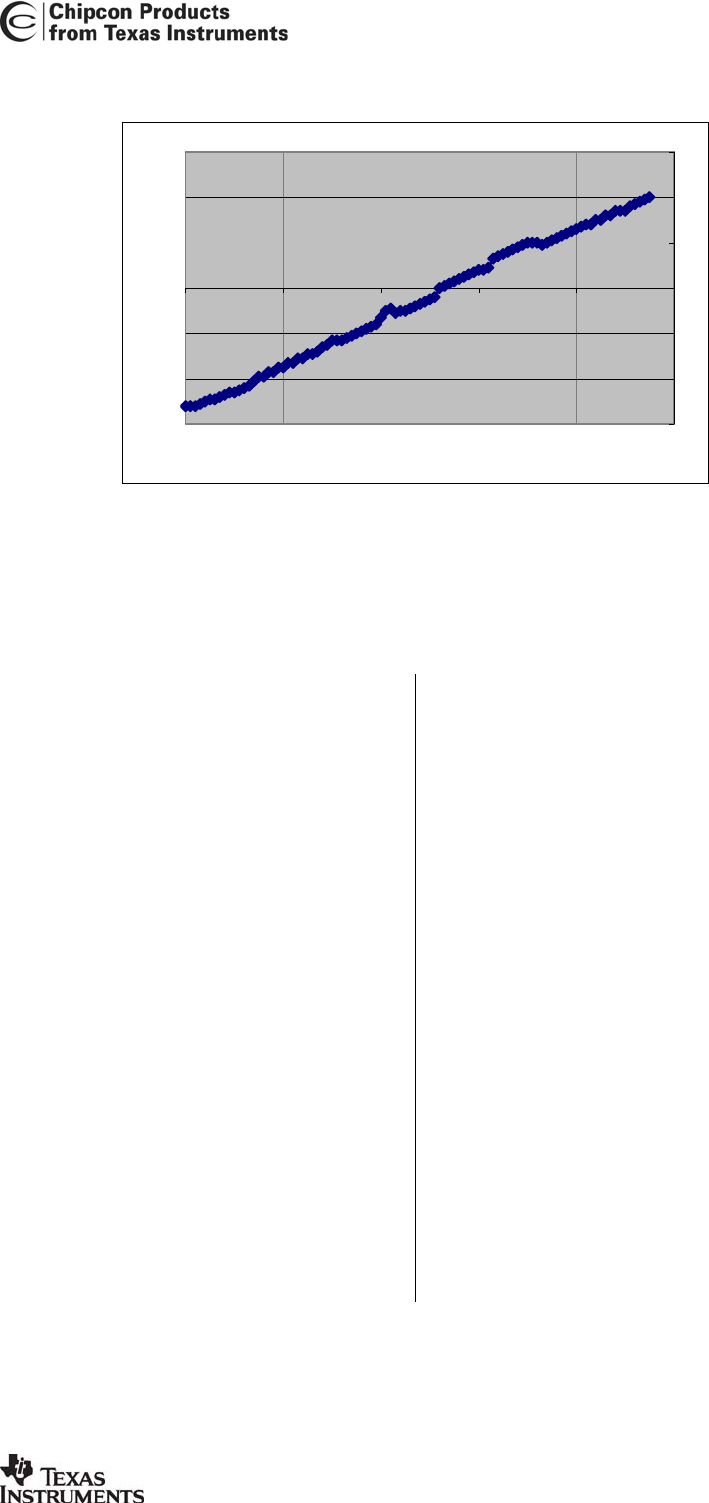
CC2420
SWRS041B Page 49 of 89
-60
-40
-20
0
20
40
60
-100 -80 -60 -40 -20 0
RF Level [dBm]
RSSI Register Value
Figure 27. Typical RSSI value vs. input power
24 Link Quality Indication
The link quality indication (LQI)
measurement is a characterisation of the
strength and/or quality of a received
packet, as defined by [1].
The RSSI value described in the previous
section may be used by the MAC software
to produce the LQI value. The LQI value is
required by [1] to be limited to the range 0
through 255, with at least 8 unique values.
Software is responsible for generating the
appropriate scaling of the LQI value for the
given application.
Using the RSSI value directly to calculate
the LQI value has the disadvantage that
e.g. a narrowband interferer inside the
channel bandwidth will increase the LQI
value although it actually reduces the true
link quality.
CC2420
therefore also provides
an average correlation value for each
incoming packet, based on the 8 first
symbols following the SFD. This unsigned
7-bit value can be looked upon as a
measurement of the “chip error rate,”
although
CC2420
does not do chip
decision.
As described in the Frame check
sequence section on page 38, the average
correlation value for the 8 first symbols is
appended to each received frame together
with the RSSI and CRC OK/not OK when
MDMCTRL0.AUTOCRC is set. A correlation
value of ~110 indicates a maximum quality
frame while a value of ~50 is typically the
lowest quality frames detectable by
CC2420
.
Software must convert the correlation
value to the range 0-255 defined by [1],
e.g. by calculating:
LQI = (CORR – a) · b
limited to the range 0-255, where a and b
are found empirically based on PER
measurements as a function of the
correlation value.
A combination of RSSI and correlation
values may also be used to generate the
LQI value.


















